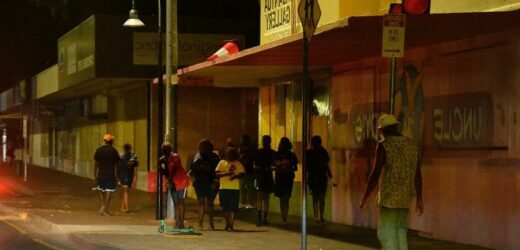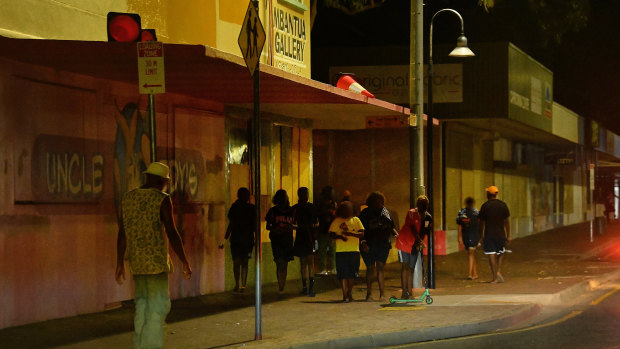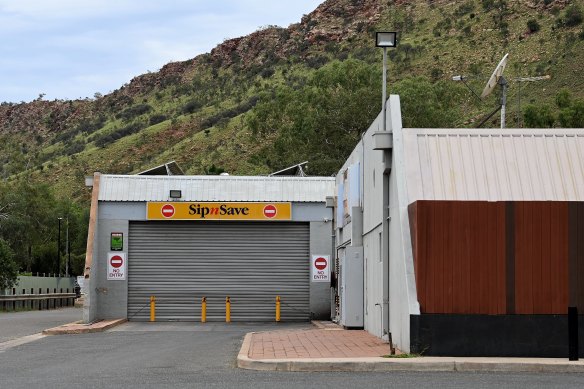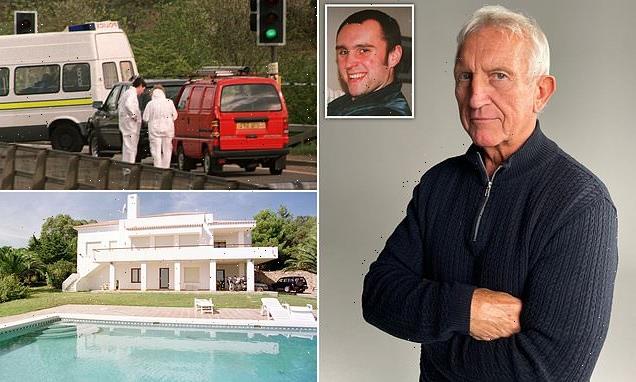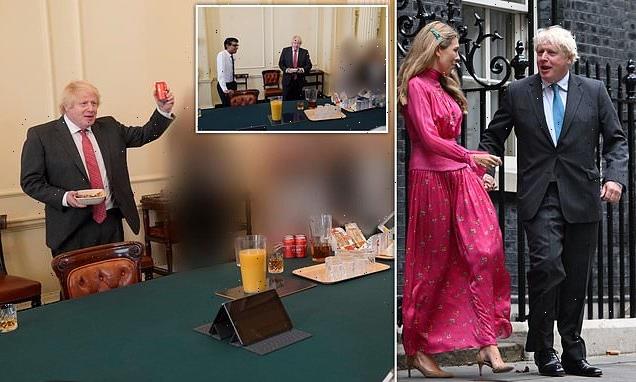Much has been said about the problems of Alice Springs from the perspective of residents, social workers, politicians, media commentators and Indigenous leaders and for once, there is consensus. It is a national disgrace.
But there are groups that have largely remained silent because to speak could prove professional suicide: the cops, the doctors and those who try to make laws work. They spoke to us with a guarantee of anonymity.
They are the ones assigned to fix a crisis that has defied generations, trying to save a building constructed on quicksand.
The cops
They don’t fly in and fly out. They are there 24 hours a day and deal with the kids, both as victims and offenders when every other agency has failed.
There are about 220 police in Alice Springs – the highest police-to-public ratio in the country – and yet the crime rate is spiking.
Across the Northern Territory the police attrition rate is heading towards 10 per cent.
“Tim” loves the Territory, and says the problems in Alice Springs have never been worse.
“It has been on the slide for 12 to 18 months, particularly since Stronger Futures finished.”
Stronger Futures (and its predecessor) was a set of federal laws introduced in 2007 with a sunset clause. It included strong alcohol restrictions aimed at the Indigenous community, stationing armed police auxiliary officers at bottle shops to check identification, refusing entry to people on a banned list or if they reasonably believed the alcohol was intended for distribution in dry areas.
Several human rights, legal collectives and Aboriginal support groups submitted to a federal review that the laws were discriminatory. (They were, as they were aimed at one group.) In July last year Stronger Futures lapsed, with the NT Chief Minister Natasha Fyles saying it was a race-based policy that her government would not support.
This meant town camps around Alice Springs were no longer dry and the results – medical, legal and social – have been catastrophic, with massive jumps in property crimes, assaults, hospital admissions and ambulance call-outs. (There has been a backflip, but more of that later.)
According to Tim: “There are rivers of grog. In 20 years I’ve never seen anything like it.”
Another cop, “John”, says: “The majority of the kids are on the street to get away from the alcohol and violence. There is a core of 10 per cent that commit about 90 per cent of the crime.”
He says few young offenders are sent to youth detention: “You have to be pretty bad to be sent there. You have to have a rap sheet as long as your arm. A young offender who stole 50 cars and broke into about 50 houses was still not sent into detention.
Ten per cent of the kids commit 90 per cent of the crime, according to police.Credit:Kate Geraghty
“Winter is usually the quiet time when we can reset, but not this year.”
He says police are forced to deal with complex social issues outside of law enforcement.
“There are hundreds of social welfare and truant officers. When does policing stop and social welfare begin? The police are the ambulance at the bottom of the cliff when everything else has failed.”
He says kids are taken home and returned to abusive conditions while reports to Territory Families (the responsible government agency) result in little action.
Both Tim and John say the police view that the shame of the Stolen Generation is leaving Indigenous children in danger.
“If a caucasian kid in middle Melbourne was at risk we wouldn’t accept it, so why do we with Aboriginal kids here?” says John.
“We can take them to a facility where they can get clothes and have a good feed, but they can’t be kept and can head off any time.
“There are so many social causes – we act as doctors, social workers, ambulance officers and educators. We are not doing the basics of policing – locking up the bad guys.”
Tim says the young offenders have often lost connection with traditional culture, no longer respecting elders, and have embraced the worst of modern society.
“They are trying to outdo each other stealing cars, doing ram raids and driving outrageously to stream online. It is all about social media.
“Every summer we have an operation to bus them back to camp. In nine months we picked up one kid 70 times.”
The doctors
“Ben” says: “When they restricted the booze the assault victims we were seeing dropped by 90 per cent. Now it has gone absolutely crazy.
“In Melbourne if you present with a sore knee you test for gout and then a trauma injury. In Alice Springs you first test for rheumatic fever and gonorrhoea.
“Many of the kids have foetal alcohol syndrome and hearing loss from burst eardrums through constant infections. Their speech and learning abilities are stuffed from an early age.”
“Steve” says: “There is ferocious anger at having been profoundly disadvantaged for generations.”
He says social media and the pandemic have created new problems: “Young white males are watching racist influencers and Aboriginal kids are doing weird shit to get likes.”
Ben says the pandemic shut down many social welfare programs and left youths in remote communities with nothing to do: “Petrol sniffing has exploded.” He says Aboriginal families were locked down in houses without power in the middle of heatwaves.
Steve says there are 11 Aboriginal liaison officers at the Alice Springs Hospital. “They are the glue that holds the place together, yet they are the lowest paid. It is a disgrace.”
He says there is a new and unsurprising mood in the Indigenous youth: “There is anger and hatred to white people. The kids have nothing to lose. They know they are going to jail and they don’t care because they have no future and they have no hope. They are bored – there is absolutely nothing to do.”
Well-meaning, paternalistic policies have been disastrous, he says, citing $200 million to add bedrooms to houses to allow larger family groups to live together. “Often they would build in the verandah, the one area people liked in the house. They added rooms and doors, meaning people had to walk through a bedroom to get to the next one, adding to assaults.
“When women said men followed them into the bathroom and locked the door to assault them, they [the policymakers] removed the doors. Now kids won’t shower or go to the toilet indoors because there is no privacy and no dignity.
“In remote areas there may be 25 people in a house with a blocked toilet. We need to look at hopeless poverty and overcrowding as base causes. Blaming alcohol alone is an easy out.”
The lawmakers
“Clint” is a policymaker in the Northern Territory’s complex area of alcohol restrictions. He says: “Alcohol alone is not the single problem. It is a symptom of much bigger issues.
“In 2007 we came to work to find the [Howard] federal government had introduced legislation without consulting us. Basically, it took over the NT Liquor Act.
“When it lapsed [in July last year], this government decided not to extend what is a racist policy.”
The problem, “Frank” says, is Indigenous communities had to opt out of the new rules rather than opt in – meaning liquor restrictions were lifted unless the community decided to remain dry. Only 15 of the 400 communities kept alcohol restrictions.
After the federal government in confidential talks, last week threatened to intervene, the NT government reversed the policy, which means the communities are now dry. To allow alcohol, 60 per cent of community residents must now vote to lift the bans and then provide an Alcohol Management Plan for approval by the Director of Liquor Licensing.
A drive-through bottle shop in Alice Springs. Credit:Kate Geraghty
Many from the right want the kids who roam the streets locked up and taken from dysfunctional families. Many from the left rail against laws that treat Indigenous people differently.
What everyone agrees is that what is in place now is not working.
Then it struck me. The people I spoke to – the cops, the doctors and the lawmakers – all have different experiences and different views on what is needed.
But they have one thing in common. They are the decision makers, and they are all white.
A cultural guide to going out and loving your city. Sign up to our Culture Fix newsletter here.
Most Viewed in Politics
From our partners
Source: Read Full Article
